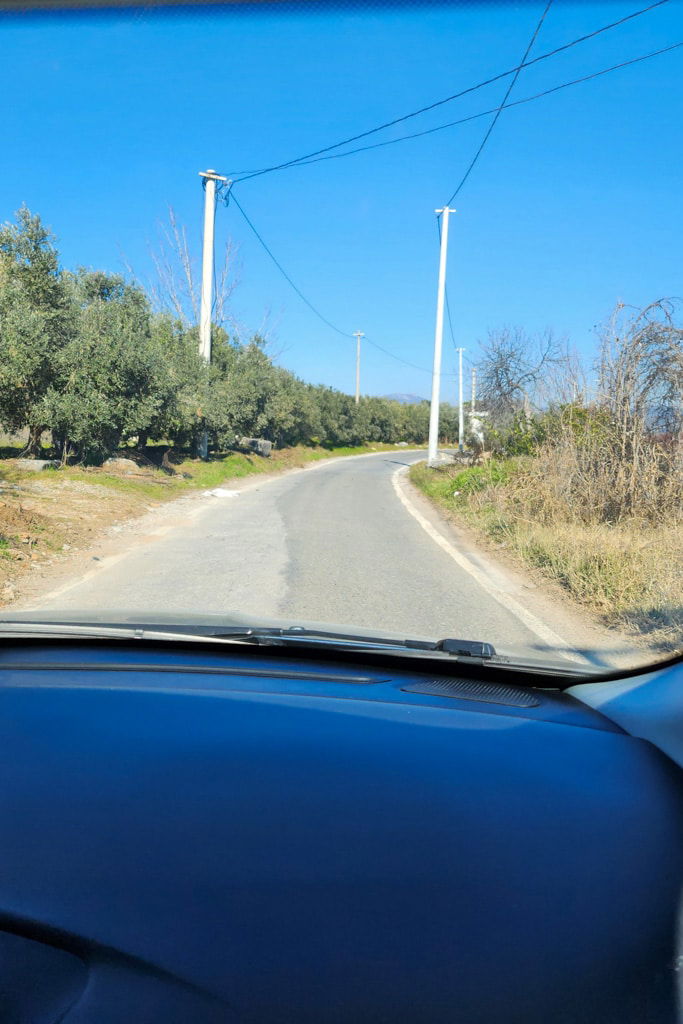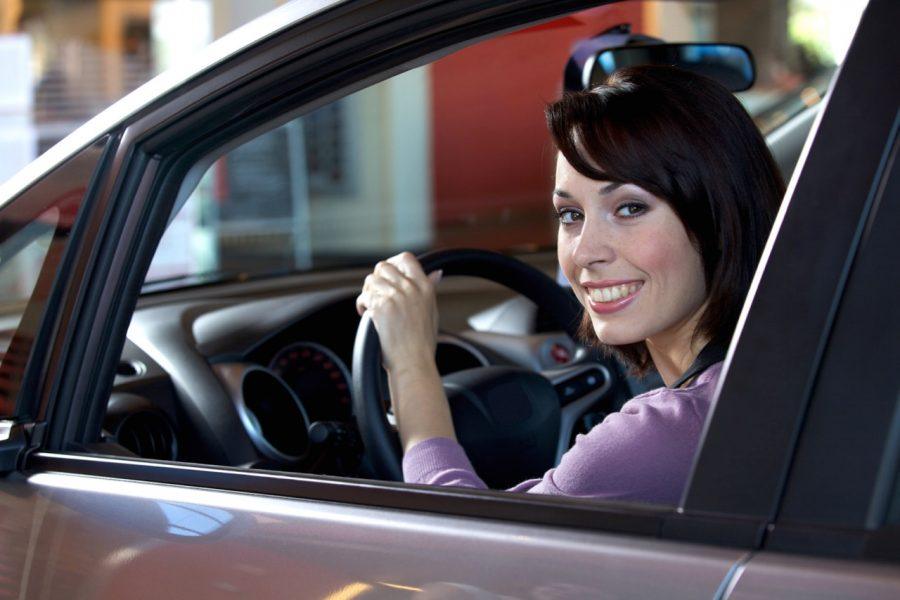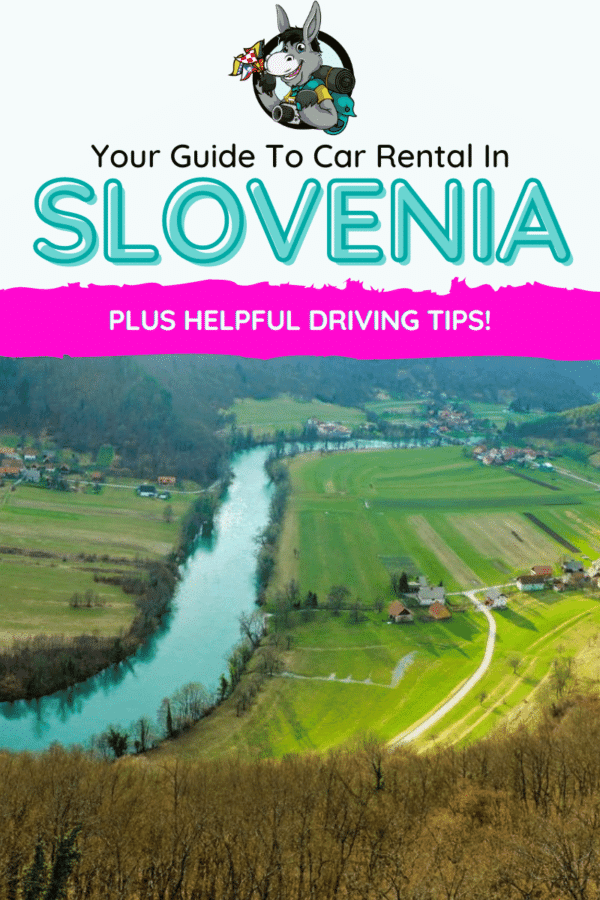Slovenia is a beautiful country, packed with natural landscapes and history at every turn. My husband and I have driven in Slovenia dozens of times – after all, it’s just across the border where we live in Croatia. So, here is all I think that you need to know about driving and car hire in Slovenia.
Skip Ahead To My Advice Here!
My Driving Experience In Slovenia
Alright, folks, buckle up, and let’s talk driving in Slovenia. Picture this: you’re cruising along the freeway, surrounded by some of Europe’s most stunning landscapes. Slovenia is a treasure, but driving here? It’s a bit of a mixed bag that’ll keep you on your toes.
So here’s the lowdown: cars drive on the right side of the road. Simple, right? But if you’re from a place where you drive on the left, give yourself a minute. Maybe do a little practice run because those Slovenian freeways, especially in summer, they’re no joke. I almost got sideswiped on my own journey. One minute, you’re admiring the view; the next, a car is zipping past, way too close for comfort. Lesson learned – always expect the unexpected on those busy roads!
Now, let’s talk mountain driving. Those steep, winding roads, while offering postcard-perfect views, can be a tad tricky. Especially in winter, those roads aren’t just steep; they’re slippery. My two cents? Winter tires aren’t optional; they’re a must-have. Seriously, safety first, always.
Driving in Slovenia is kind of like an unexpected adventure. From the speedy freeways to the careful navigation needed on the Julian Alps, you’re constantly reminded to strike a balance between soaking in those lovely Slovenian sights and keeping those eyes firmly on the road. It’s the sort of drive that’s sure to keep your heart racing in every sense!
Remember, this isn’t just about getting from point A to B. It’s about enjoying every bit of the journey while staying safe and sound. So, if you ever find yourself on the Slovenian roads, take a deep breath, enjoy the view, but most importantly, drive safe and stay sharp!
Do You Need A Car In Slovenia
Slovenia is a beautiful country, packed with natural landscapes and history at every turn. Of course, significant spaces and distances between the major towns and cities make it challenging to get around by public transport.
If you’re staying in Ljubljana’s capital city, you can usually use buses or trains to get you to the closest cities, such as Postojna or Koper. But what if you don’t want to be at the mercy of a timetable and take things at your own pace?
Hiring a car in Slovenia is your best option if you want to visit any place that’s a little further away or somewhere more remote due to its natural location.
Destinations such as Kranjska Gora, Vrsic Pass, Skocjan, the upmarket spa resort areas, or the Jeruzalem Wine Region are fantastic places to visit. Still, you cannot get there and back comfortably with public transport. So, again, I recommend hiring a car.
Car Hire Companies In Slovenia
Below, you can find the best deal on all any car type that suits. Some offers include free cancellation as well as van rental, long-term car rentals, and one-way car rentals. These providers are found in the city center. Most providers are in the capital of Ljubljana, Slovenia, but also smaller cities.
Remember to shop around for your car rental in Slovenia because the average price varies widely.
- Discovery Cars
- Avant Car
- idealRENT Rent a Car & Chauffeur Service
- Budget Rent a Car
- Sixt
- Europcar
- ATET Rent a Car
- AVIS Rent a Car
- Modicus D.O.O.
Essential Driving In Slovenia Rules And Tips

If you’d like to explore Slovenia by car, which is always a good idea, make sure that you’re aware of the various (perhaps different than you’re used to) rules regarding driving in Slovenia.
In general, however, driving in Slovenia is pretty easy and straightforward.
Roads are typically in excellent condition, while Slovenia’s road signs are similar to those elsewhere in Europe.
Below, we’ve outlined all the essential knowledge for a successful Slovenia road trip, including tips, the gear you might need, Slovenia driving rules, and other important stuff.
1. You Must Be 21 Years Of Age To Rent A Car
To rent a car in Slovenia, you the minimum age is 21.
2. Have A Driving History
You must also have a driver’s license for at least two years.
3. Be Prepared For Restrictions
Anyone under 25 may be subject to a surcharge for young drivers and the regular car hire cost. The car rental company may also restrict the type of vehicle for drivers between 21 and 24 years of age.
4. Show Proof Of Your Licence
To drive in Slovenia, you must possess one of the following:
- a legitimate license from an EU nation or a
- a valid license from your home country accompanied by an International Driving Permit
5. Carry Your Documents
It’s a necessity to carry your license with you at all times while driving.
6. You’ll Need A Credit Card To Hire A Car
This is the case in many countries, but in Slovenia, you’ll undoubtedly need a credit card – not a debit card – to hire a car. This is to hold the charge, and a set amount will be set to one side on your card and refunded when the vehicle is returned undamaged.
It’s important to note that if you’re not planning on buying comprehensive insurance directly from the rental company, they will require your credit card to secure a payment, also known as a deposit, which is over and above the rental charge.
Remember that this charge is in addition to the rental fee, and it could potentially max out the daily, weekly, or monthly limit on your card. Hence, it’s imperative to plan accordingly!
7. Know The Basic Insurance Needs
When hiring a car, you’ll be offered many types of insurance. Some you will need, some you won’t. The mandatory insurance you’ll need when hiring a car in Slovenia is ‘Slovene third-party liability insurance. This should be included when you hire a car, but always double-check.
From there, it’s your choice which other types of insurance you take and what you feel comfortable with.
8. Check If You’re Allowed To Cross Borders
Once you’re done with Lake Bled and other sights in Slovenia you may want to drive to Austria, Italy, Croatia, and Hungary. But keep in mind that it involves international border crossing. Not all car hire companies will allow you to cross borders. If this is something you plan on doing, double-check beforehand with the rental company.
9. Cross The Border Will Cost More
Not all car hire companies permit cross-border travel, and some often charge additional costs.
10. Border Crossings May Require Documentation
You need to be careful of border crossing requirements because these vary from country to country.
In some cases, you may require a Cross-Border Card (CBC). You will also need your passport and any visa paperwork, depending on your country of origin, as well as your driving license and insurance paperwork.
You should have the following documents with you at all times when driving in Slovenia:
- Valid driver’s license
- Proof of ID (passport or ID card)
- Proof of ownership
- Insurance paperwork
The first two are your responsibility, while the Slovenia car rental agency should take care of the latter.
11. Extras Cost Extra
Be prepared to incure additional charges for an additional driver, GPS, child seats, and baby seats.
12. Most Rental Cars Are Manual
In Slovenia, you’ll find the majority of rental cars are manual. You may find the odd automatic car, but you will need to pay more because they are so rare.
13. Any Car Will Work
You don’t need a 4×4 or any specific type of car in Slovenia; the mountains aren’t that steep, and you’ll find that the roads are in good condition throughout the country. However, don’t choose the smallest engine when choosing your hire car.
14. Drive On The Right

If you are from a country used to driving on the left, remember that the Slovenia driving side of the road is the opposite (right) side! Take it steady at first, as getting used to this change can take a little while.
15. Be Roundabout Savvy
Many people get a little nervous about roundabouts, even in their own country, but the rules differ slightly from place to place. In Slovenia, you do not have to indicate your direction when you are approaching a roundabout. But when you are leaving the roundabout, though, you must.
16. Mandatory Equipment
Driving in Slovenia requires you to carry some specific equipment in your vehicle. You can get a painful on-the-spot fine if you’re not holding the following items:
- Warning triangle
- Reflective vest or jacket
- Spare set of lights
- First-aid kit
- Non-expired fire extinguisher
- Between November 15 and March 15, your car must be equipped with winter gear. This includes winter tires having a minimum tread depth of 3mm or, alternatively, summer tires, provided there are snow chains stored in your car’s trunk
17. Spiked Tires Or Snow Chains Are Required During The Winter Months
From November 15 to March 15, Slovenia is in the midst of winter. During this time, all vehicles on all types of roads must use snow tires or carry snow chains in the car. You shouldn’t go over 50 km/h if you use snow chains.
18. Seat Belts Are Mandatory
The driver and all passengers must wear a seat belt at all times. There is no bend in this rule at all.
19. Kids Must Be Strapped In – Seats And Belts For Children
In accordance with European regulations:
- Infants in Slovenia below the age of 3 should always be secured in a child safety seat, regardless of whether they are seated in the front or back of the car
- For children aged 3 to 12 or those less than or equal to 135 cm tall (whichever occurs first), utilizing a suitable booster seat is mandatory
- If you have a child in the front seat who is sitting in a rear-facing restraint, you must deactivate the airbag
20. Slovenia’s Speed limits
- In urban, built-up, and residential areas: 50 km/h
- In rural areas and on regional roads: 90 km/h
- On express roads: 110 km/h
- On Slovenia motorways – 130 km/h
21. Drunk Driving Is A Big No-No
Drunk driving in Slovenia is frowned upon in a big way, as is the case in most countries worldwide. So, it’s best not to drink at all when driving. Slovenia’s legal limit is 0.05% of alcohol in the blood, but the limit is zero for drivers with less than two years of driving experience.
22. Cellphone Use Is Banned
When driving in Slovenia, the use of a cell phone is banned. However, you can use it hands-free if you have a system installed in the car before you set off. If your phone rings, you must pull over in a safe and suitable place, turn off the engine, and then answer your phone.
23. You Cannot Wild Camp In Slovenia
You cannot sleep in your car – aka wild camp in Slovenia, but there are many camping sites around the country. Look for the one closest to you, and you can often book at short notice. If you’re planning on doing a lot of driving, it might be a good idea to look at vehicles with sleeping facilities.
24. Availability Of Fuel
You won’t struggle to find a fuel/gas station within the capital, and they are usually open from 7 a.m. to 8 p.m., except on Sundays. If you are heading to a border crossing or into the capital, fuel stations are often open 24 hours a day.
All fuel stations have unleaded gasoline and diesel, and some locations also have LPG. You can pay with local cash. However, most stations do accept Visa and Mastercard as well.
You will find that most fuel stations have the English name for different fuel types, but some may only have it in their native language. In that case, the following applies:
- Neosvinčen bencin (95 / 98) – Unleaded petrol
- Dizel – Diesel
25. Roadside Assistance
In case of an accident, theft, or other unfortunate circumstances, you can call 112 for ambulances or fire trucks and 113 for the police (emergencies). If your car breaks down, you can either call the number provided by your Slovenia rental car company or the general, public Slovenia roadside assistance service at 1987.
Sometimes, you can also get assistance with your car rental package. Ask when collecting your car if they cover the following:
- Misplacement or destruction of vehicle keys
- Accidentally locking keys in the vehicle
- A flat tire
- Car issues
- Running out of gas
26. Slovenia Toll Roads
There are no toll booths on Slovenia motorways. Still, you must have a so-called vinjeta Slovenia, essentially a prepaid vignette that allows you to use the main highways. This is one of the essential Slovenia driving tips I can’t stress enough! I got in trouble the first time I drove in Slovenia as I had no idea.
That DARS vignette can be purchased at various locations around the country, including all fuel/gas stations (in Slovenia and its neighboring countries), post offices, automobile club branches, and certain kiosks near border crossings. We can’t stress enough how important this is since the fine for not having one while using the Slovenia motorways is very high.
However, when renting a car in Slovenia, your car should already have a valid vignette. But do make sure to double-check this or ask about it when picking up your vehicle.
27. Book Early To Save
Slovenia attracts a lot of visitors, particularly in the summer. If you’re looking for a wider selection of vehicles and favorable rates, consider renting a car at the earliest opportunity. Please don’t wait for last-minute offers during summer; they’re unlikely to occur. Once you’ve settled on your travel dates, secure your vehicle reservation!
28. Beware Of Thunderstorms
It’s not unusual in the summer months for a random thunderstorm to come out of nowhere. This is a common occurrence in Slovenia, and it’s essential to be aware of it. If this happens and you do not feel happy driving in this type of weather, pull over and wait for it to pass. These storms tend to give quite quickly.
29. Cover Yourself
These are my tried and trusted car hire tips to cover yourself…
Step 1: Begin with a Warm Welcome!
Hey there! So, you’re about to pick up your rental car? Exciting times ahead! First things first, greet the rental folks at customer support with a friendly smile – it sets a positive tone for your whole journey.
Step 2: Dive into the Documentation
Now, it’s paperwork time. Whether it’s done in person or they’ve just handed you a form, ensure all pre-existing dents, scratches, or issues are well-documented. If something’s missed, point it out and make sure they jot that down, too!
Step 3: Become a Car Detective 🕵️♂️
Grab your detective hat because we’re about to scrutinize every inch of that car. Here’s a handy checklist for you:
- Exterior Check: Hunt for dents and scratches – don’t let any spot go unnoticed!
- Roof and Under the Bumper: Especially sneaky spots that often get neglected! Ensure no damage is hiding there
- Mirror Backs: Check behind those mirrors; damage here often goes unnoticed but can catch you out later
- Interiors: Look for any stains, rips, or issues in the interior of the car
- Tires: Ensure they’re in a roadworthy condition
- Fenders: Give a quick check above the wheels to make sure all is good there
Step 4: Snap Away 📸
Your phone isn’t just for selfies – it’s a tool! Photograph every angle of the car (yes, even the boring bits like the roof and undercarriage). This photographic evidence is your best friend if there are any disputes when you return the car.
Step 5: Peek into the Trunk
Let’s not forget about the spare tire. Ensure it’s there and in good nick. You never know when you might need it!
Step 6: A Look at the Dashboard
Ensure the gas level and mileage match what’s recorded on your paperwork. If not, back to the agent you go!
Step 7: Off You Go!
Now that you’ve got everything checked and recorded, it’s time to hit the road. Remember to store all your documents and evidence safely!
Step 8: The Return
And as every journey ends, ensure to return the car with the gas at the agreed level and be present for the return inspection if possible.
Pro tip: When you return the car, why not do a quick photo session just like when you started? This way, you have a clear record of the car’s condition upon return, avoiding any potential discrepancies later on.
Bonus Tip: Drive Safe, Always!
Navigating through your holiday destination, remember to drive safe and adhere to local road rules. Explore, create beautiful memories, and enjoy every moment on your holiday roads! 🚗🗺️
Remember, this guide isn’t just practical; it’s your ticket to a stress-free car rental experience, ensuring your focus stays where it should be: on your thrilling adventures ahead. Happy driving!
Based on my Slovenia road trip experiences, these are a just few questions you may have been wondering…
Why should I rent a car in Slovenia?
Renting a car in Slovenia allows you to explore around the country more freely and access its hidden gems at your convenience.
What documents do I need to rent a car in Slovenia?
International travelers need a valid license from their home country and an International Driving Permit to rent a car in Slovenia. Age and years of driving experience can also affect the rental process.
When is the best time to book a car rental in Slovenia?
It’s recommended to book early for the cheapest prices – or at least the most reasonable prices, and more availability of car options. Cars of any size and power can manage Slovenian roads comfortably.
Where are the popular car rental hubs in Slovenia?
Popular car rental hubs are Ljubljana Airport, Ljubljana town, Koper port, and Ljubljana train station.
What are the insurance options while renting a car in Slovenia?
Multiple types of insurance are available, offering varying protection levels. You have the option to buy insurance at the time of booking or use credit card insurance.
Can I cross borders into neighboring countries?
Certain rental companies may allow or charge extra for crossing borders into neighboring countries. Checking with your rental company before planning a cross-border trip is advised.
What are some well-rated car rental companies in Slovenia?
Well-rated companies offering Slovenia car rental services include National, Sixt, and Enterprise.
Is driving in Slovenia safe?
Driving in Slovenia is generally considered safe, with excellent road conditions and clear signages that adhere to European standards.
1. What are the navigation options available when traveling?
Travelers can use their own GPS, their phone with a pre-downloaded map, or consider renting a GPS.
2. What to consider about additional drivers and child safety?
Additional fees might be charged for additional drivers or necessary child safety equipment. Check these beforehand.
What should I do when picking up the vehicle?
Do a thorough check of the vehicle and its mandatory equipment, ensuring every aspect is documented and in proper condition.
How to handle tolls, fines, or tickets during the rental period?
All tolls, fines, or tickets are the driver’s responsibility. All rental cars should have a DARS vignette valid for motorway usage.
What should I be aware of when returning the vehicle?
Try returning the vehicle during working hours, ensuring the fuel level is maintained, and taking pictures to document the car’s final condition.
What are Slovenia’s driving rules and conditions?
Understanding local driving rules, including speed limits, alcohol level, use of cell phones while driving, and mandatory seat belt use, is important for safe travel.
Any advice for planning the travel itinerary?
Planning your route ahead can lead to a more balanced and enjoyable trip. Be aware of potential weather dangers and distractions from the mesmerizing scenery.
Now, you know everything you need to know about hiring a car and driving in Slovenia. When will you start your road trip?



Thanks for sharing this. Your tips are very helpful. I am a travel freak and travel a lot and love good tips
Would love to get travelling with my kids one day soon!
Nice
Thanks for sharing this, it was an extremely good post
Thanks for sharing this, it was an extremely good post
Thank you very much for presenting this data about hiring a car in Slovenia… great post!
I am spending a one week vacation in Slovenia starting 16th October. I heard that there car hire companies in Slovenia that cater for pick-up and drop-off at Trieste airport in Italy. Is this true? If yes, could you kindly indicate some contacts.
thank you for sharing amazing knowledge keep it up.
i just read your amazing article. thank you for sharing quality information for travellers